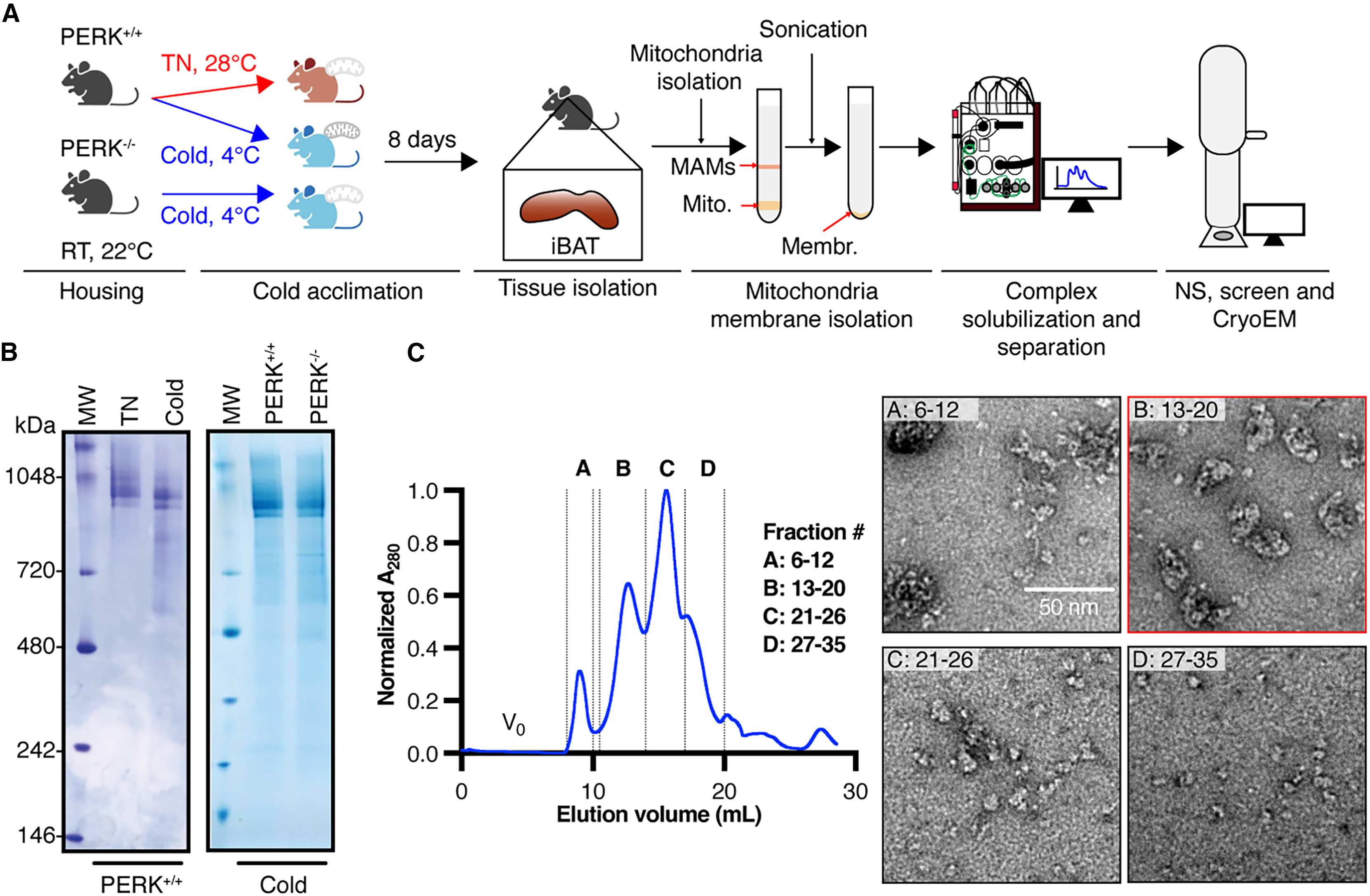Home > Publications
Shin, Y.C., Latorre-Muro, P., Djurabekova, A., Zdorevskyi, O., Bennett, C., Burger, N., Song, K., Xu, C., Sharma, V., Liao, M. and Puigserver, P., 2024. Structural basis of respiratory complexes adaptation to cold temperatures. CELL.
In response to cold, mammals activate brown fat for respiratory-dependent thermogenesis reliant on the electron transport chain. Yet, the structural basis of respiratory complex adaptation upon cold exposure remains elusive. Herein, we combined thermoregulatory physiology and cryoelectron microscopy (cryo-EM) to study endogenous respiratory supercomplexes from mice exposed to different temperatures. A cold-induced conformation of CI:III2 (termed type 2) supercomplex was identified with a ∼25° rotation of CIII2 around its inter-dimer axis, shortening inter-complex Q exchange space, and exhibiting catalytic states that favor electron transfer. Large-scale supercomplex simulations in mitochondrial membranes reveal how lipid-protein arrangements stabilize type 2 complexes to enhance catalytic activity. Together, our cryo-EM studies, multiscale simulations, and biochemical analyses unveil the thermoregulatory mechanisms and dynamics of increased respiratory capacity in brown fat at the structural and energetic level
